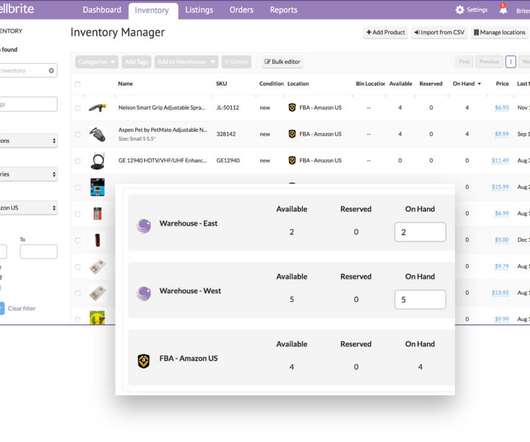The History of Ecommerce: What The Past Says About Tomorrow’s Retail Challenges
BigCommerce
FEBRUARY 13, 2018
Globally, ecommerce growth projections are also on an upward trajectory: They show that retail sales may exceed $4.058 trillion by as soon as 2020. of total retail sales. When you buy shoes from an online shoe retailer, it is a business-to-consumer transaction. Business-to-Business (B2B). 2009 Square, Inc.












Let's personalize your content